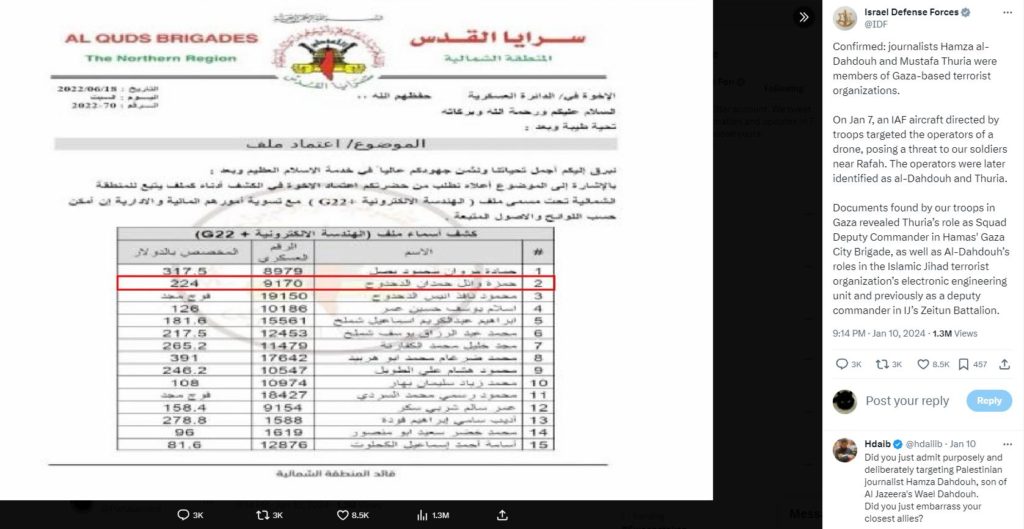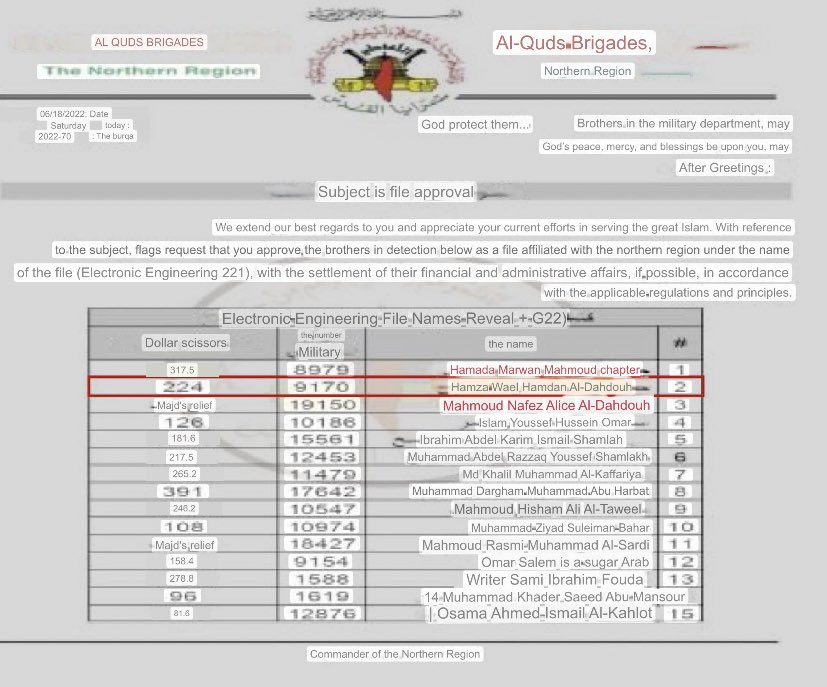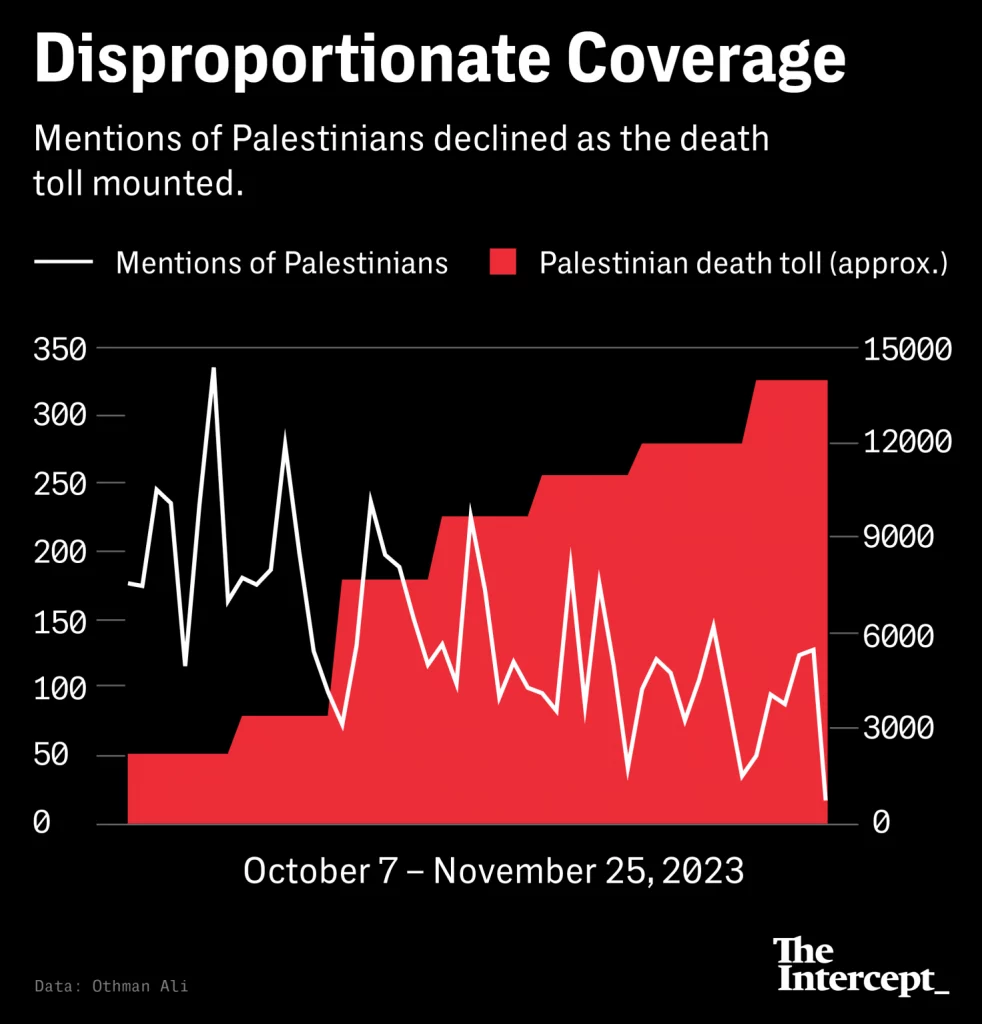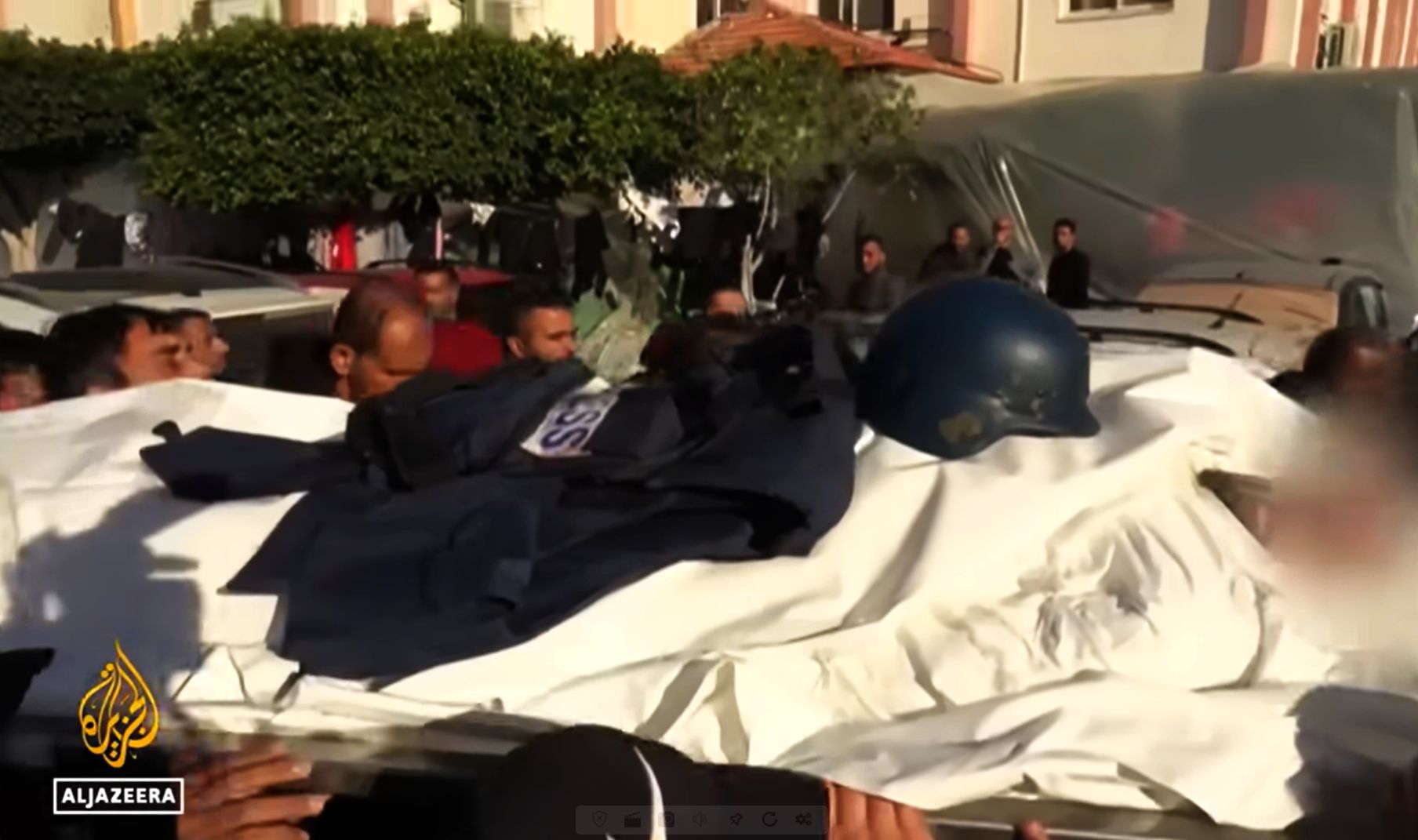Original article (in Croatian) was published on 25/1/2024; Author: Ana Benačić
More journalists have been killed in the ten weeks of war in Gaza than in any other country over the entire year.
The scale of the industrial demolition of Gaza and its population after October 7 has in many ways overshadowed numerous war conflicts in the world. Over 10,000 children were killed, out of a total of 25,000 victims. Journalists are not spared in this devastating statistic.
In the ten weeks of conflict, Gaza witnessed the highest journalist death toll in any single year since the Committee to Protect Journalists (CPJ) began keeping records in 1992. As of December 2023, 62 journalists had been confirmed killed. A month later, the situation worsened, with the International Federation of Journalists (IFJ) reporting the targeted killings of 90 Palestinian journalists. CPJ’s figures include at least 83 media workers, with casualties from multiple nationalities, including three Lebanese and four Israelis, some of whom were killed on the first day of the Hamas attack. This includes two fatalities at a festival and two in an attack on a kibbutz.
Reporters Without Borders has called for the release of over 30 Palestinian journalists detained under harsh, inhumane, and degrading conditions.
According to the Committee to Protect Journalists, 2023 saw a total of 95 journalists killed worldwide, a figure that includes casualties from the Israeli-Palestinian conflict, marking the year as not exceptionally high in terms of reporter fatalities.

At the same time, the Union of Palestinian Journalists claims that the numbers are higher, i.e. that 112 colleagues were killed in the first hundred days of the war. They allege that the Israeli army is killing journalists deliberately, “as part of an attempt to kill the truth in the context of the genocide to which the Palestinian people in general, and our people in the Gaza Strip in particular, are exposed.”
“Ten percent of journalists in Gaza have been killed… and many of their families have also been injured or killed. At least 80 to 85% of the journalists killed in Gaza were targeted because they are journalists”, the union said.
Journalists Under Attack
“CPJ is particularly concerned about the apparent pattern of targeting of journalists and their families by the Israeli military. In at least one case, a journalist was killed while clearly wearing journalistic insignia in a non-combat location. In at least two other cases, journalists reported receiving threats from Israeli officials and Israel Defense Forces officers before their family members were killed”, the Committee said in December.
The “murderous pattern” of the Israeli army was reported even before the escalation in October 2023, when in 22 years the IDF killed “only” 20 journalists. The main findings that led them to declare the existence of a pattern in which the IDF kills journalists are as follows:
– Israel rejects the evidence and claims of the witnesses
– The Israeli forces did not respect the journalist’s badges
– Israeli officials respond by pushing false narratives
– Journalists are accused of terrorism
– Israel opens investigations under international pressure
– Officials, according to everything, release the soldiers (from responsibility) while the investigations are still ongoing
– Investigations are slow and non-transparent
– IDF killings undermine independent reporting
– Journalists’ families have almost no refuge inside Israel
Unusual Claims Linking Journalists to Terrorism
Al Jazeera’s Gaza bureau chief Wael al-Dahdouh has become not only a symbol of the suffering and perseverance of Palestinian journalists in Gaza but has directly accused the IDF of targeting him and his family. Namely, after their family home was destroyed in October, part of his family took refuge in the Nuseirat refugee camp. The camp was subsequently destroyed in an airstrike, killing four members of al-Dahdouh’s family – his wife, 15-year-old son, seven-year-old daughter and one-year-old grandson. Wael al-Dahdouh continued to report. In December, he was wounded, and his cameraman, Samer Abudaqa, was killed. CPJ requested an investigation into the attack on the team, and Wael continued to report.
And then in January, his eldest son Hamza, also a journalist, was killed. With two other colleagues, he went to Khan Younis to talk to refugees. Their car was bombed in an Israeli air attack and besides Hamza, Mustafa Thuraya, a freelancer specializing in drone photography, died, while a third journalist was seriously wounded. The world was shocked by the news of Hamza’s death. The Israeli army first said that their vehicle posed a threat to the Israeli army and that it was transporting a targeted terrorist, as well as that they were aware that “two other suspects were also hit”. After this, Daniel Hagari, the IDF spokesman, stated that “the death of every journalist is unfortunate”, but also that they were hit because of the plan to raise a drone in a war zone. A few days later, the story turns again, and the IDF publishes an unusual document on X:

“Documents found by our troops in Gaza revealed that Thuria was the deputy commander of a squad in the Hamas Brigade in Gaza City, while Al-Dahdouh performed functions in the electronic engineering squad of the terrorist organization Islamic Jihad, and was previously the deputy commander in the IJ- to this Zeitun Battalion”, the IDF announced. They asserted, therefore, that the murdered journalist duo was actually on the payroll of the Al-Quds Brigades, the second largest militant group in Gaza after Hamas, which they illustrated with the payroll from 2022.
No one in the media has been able to verify this alleged payroll, which contains the names of the two murdered journalists, nor has the IDF offered additional evidence (NBC). The response on social media was that it was an admission that the IDF targeted the vehicle with this. Furthermore, other details are called into question. One of them is that it is partly written in English, and the “fee” amounts are expressed in dollars.
Inconsistencies and Discrepancies: Scrutinizing Evidence Against Journalists
Two regional experts told BBC Verify that the use of English alongside Arabic in the document was uncommon. Erik Skare, a researcher at Sciences Po University in France, and author of a book on PIJ, said: “I regularly visited the website of the Al-Quds Brigades… I read their biographies of martyrs, their books, etc. and I never saw a combination of English and Arabic text”.
Moreover, the document’s blurriness is notable, given that even modestly better cell phones can produce clear scans—if indeed the document is paper-based. A computer-generated translation from Arabic is also making rounds online. The document lists a “fee” date as June 15, 2022, specifying it as a Saturday. However, June 15, 2022, actually fell on a Wednesday. By consulting a translator fluent in Arabic, we confirmed the accuracy of the computer translation available online:

The families of the journalists have refuted the accusations made by the IDF.
The committee, along with various other organizations advocating for press freedom and human rights, urged U.S. President Joe Biden—as Israel’s primary international ally—to “do more to effectively hold accountable those who killed journalists (…) and to protect and support local and international journalists”. This request comes in light of the U.S. stance that Israel does not intentionally target journalists, a claim disputed by the Committee to Protect Journalists (CPJ), which provided evidence of abuse, threats, cyber-attacks, and arrests.
Hamas as a Justification
Gaza’s access restrictions extend to foreign journalists, with Israel controlling entry into the Palestinian territory. Since the onset of the conflict on October 7, international journalists have been barred from independent travel there. The Times of Israel reports that the Supreme Court of Israel dismissed an appeal from international media organizations seeking independent journalist access to Gaza. The court cited “security reasons,” stating that allowing journalists to enter independently could pose a risk to Israeli soldiers engaged in combat with Hamas.
On October 27, the Israeli Defense Forces (IDF) informed news agencies Reuters and Agence France-Presse that they could not ensure the safety of journalists in Gaza following requests for assurances against Israeli attacks. This stance aligns with various reasons provided by the Israeli military for conducting widespread bombings in Gaza.
“The IDF is targeting all Hamas military activities throughout Gaza”, the IDF letter said, adding that Hamas is deliberately putting military operations “in close proximity to journalists and civilians”.
Freedom of Expression in the “Only Democracy in the Middle East”
Israeli media have been co-opted into the war propaganda effort, according to Gideon Levy, a journalist, columnist, and editorial board member of the esteemed yet not extensively circulated Haaretz newspaper. In a recent appearance on Democracy NOW!, Levy detailed the shortcomings in how Israeli media outlets are covering—or rather, not covering—the conflict in Gaza, emphasizing the narrative being presented.
“The Israeli average viewer doesn’t see Gaza at all. He sees the soldiers. He sees the families of the hostages. He is being told day and night about the Israeli sacrifice. He’s being told day and night how brave are the soldiers. You see it seven days a week, 24 hours a day, and only one thing you don’t see: the suffer of Gaza. And the media decided not to show it, not because anyone pushed the media not to do it. They do it because they know very clear that this is what their viewers don’t want to see, and they want to please them. And by this, they are betraying our first mission: to tell the full story,” says Levy. The same applies to the coverage of famine in Gaza.
Another critical issue is the media’s unanimous stance that there is no space for war criticism or inquiries.
“I don’t remember a war in which after so many stages, still the entire media is just a pale echo of the propaganda machinery of the army,” says Levy. Concurrently, Israelis are being conditioned to accept that the assaults on Gaza will persist at least until 2025, with no alternatives being presented.
The Missing Sympathy of Western Media
The situation is similar with the largest media outlets in the USA, the country that arms Israel and stands as its most significant ally internationally. An extensive analysis by The Intercept of 1,100 articles from The New York Times, The Washington Post, and The Los Angeles Times, published during the first six weeks of the conflict, revealed a clear bias in these outlets towards the Israeli perspective. From a qualitative standpoint, the coverage depicted the 1,139 Israeli casualties in strong, emotionally charged terms such as “slaughter”, “massacre” and “horror”. In contrast, the phrase “under 18” was frequently used to describe Palestinian children, suggesting a noticeable disparity in how the victims of each side were portrayed.

The quantitative analysis reveals even more stark disparities. Among the 1,100 analyzed headlines, only two mention children, despite this being the deadliest conflict for children in modern history. By the end of the analyzed period, six thousand children had been killed. Furthermore, as the casualty toll in Gaza rose, the frequency of mentions in the media decreased.
Palestinian journalists fared only marginally better in media coverage than the thousands of deceased children in Gaza. Despite Gaza being the deadliest location for journalists in contemporary history, the deaths of 48 Palestinian journalists in the first six weeks of the conflict were highlighted in merely four headlines.
Children and journalists are groups that usually elicit the sympathy of the Western media. But not this time, according to the Intercept.
The Intercept notes, “By way of comparison, more Palestinian children died in the first week of the Gaza bombing than during the first year of Russia’s invasion of Ukraine, yet the New York Times, Washington Post, and Los Angeles Times ran multiple personal, sympathetic storieshighlighting the plight of children during the first six weeks of the Ukraine war.” The coverage of journalists follows a similar pattern. At the onset of the conflict in Ukraine, major American media outlets extensively covered the risks faced by reporters in the war zone.
“Six journalists were killed in the early days of the Ukraine war, compared to 48 killed in the first six weeks of Israel’s Gaza bombardment,” reports the Intercept.
Will There Be Accountability?
Two weeks ago, the issue of daily killings was brought to the forefront at the Palace of Justice in The Hague. South Africa filed a lawsuit against Israel at the International Court of Justice, accusing it of committing genocide, with a ruling on temporary measures to halt the widespread killing of Palestinians anticipated on Friday.
The Executive Board of the International Press Institute (IPI) has also declared its intention to pursue legal action against the deliberate killing of Palestinian journalists, reminding Israel that such acts constitute war crimes. “TThis unprecedented assault on journalists and journalism must end. No further time, and no further lives, can be lost,” the IPI stated.



